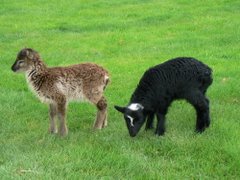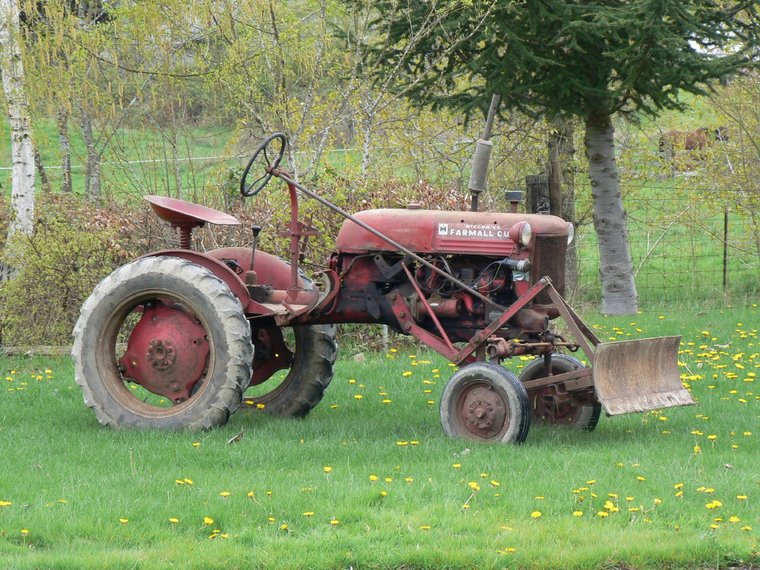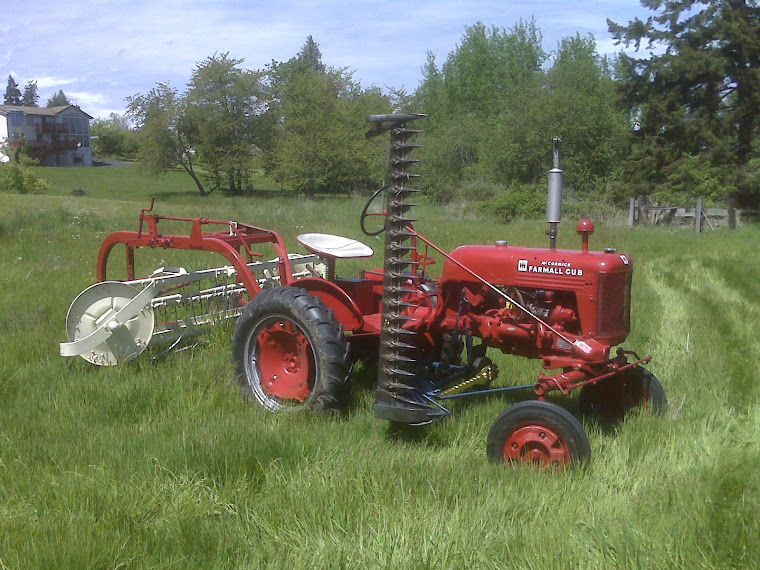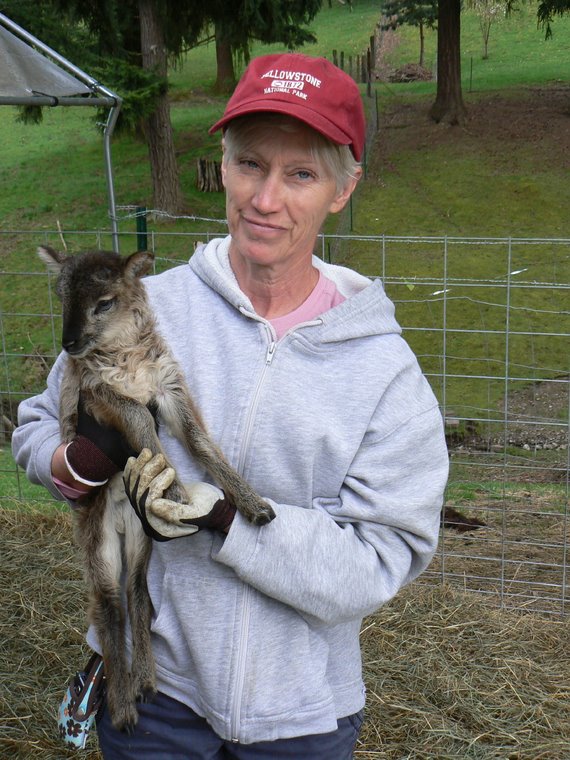Yeah! My favorite time of year for raising Soay sheep. The lambs have started to arrive, and the results of the breeding for coat color genetics are starting to be revealed. Our first two ewes to lamb were both born to self-colored black ewes, each dam with hidden white (from their sire who was Ss/Ss). These two ewes happen to be twins, and oddly, lambed on the very same day. The sire was a wild pattern light phase ram with white spotting, so A+/A? Bb/Bb Ss/Ss.
Here is the sire,
Woodland Creek Chico '06. (Click any photo for larger version).

Given the dam and sire coat color genetics, the lambs will be heterozygous at both the agouti and brown loci, and 50% odds at the white locus, that is, A+/Aa, BB/Bb, and 50% odds Ss/Ss and 50% SS/Ss. The phenotype of the lambs will thus be wild pattern dark phase, and may or may not have a white spot. The results are....
First Lamb of 2008 at Woodland Creek Farm:
Sequoyah, a ram lamb, born to Woodland Creek Pearl.

He is indeed wild dark pattern, and does have a wisp of white at the poll. Later the same day his "close relative"
Madeline, a ewe, was born to Pearl's twin sister, Olivia.

Madeline too is wild dark pattern, but does not have white spot showing.
Thus, the expected genetics and even the statistical odds were borne out precisely, even down to the gender odds. We have two dark wild coats, as they should have been, and "50% showing white spotting", and one ram and one ewe - 50%.
An even more interesting aspect of these two lambs to me is the actual coat colors, particularly the pheomelanic areas (belly, under tail and chin, etc). As I have posted previously, I have a developing conviction that with NA Soay sheep that are heterzygotes at agouti locus (that is, A+/Aa, as there are only two known alleles for Soay sheep at agouti)the coat pattern will be very dark, and the pheomelanic areas that called "copper" or darker. It is essentially the so-called "mahogany" phenotype. (See below in this post for some examples).
Of these two new lambs (although lamb coat colors will usually change somewhat in the firt year, even beyond simple sun-bleaching), Madeline in particular has a very dark pheomelanic areas. They are so dark that when she was freshly born and still wet, I thought for a while that she was actually self-colored, which would have been a BIG surprise as I do not think the sire carries self-color allele (but I can never be
sure he doesn't - can't prove a negative, as they say).
The photo of
Madeline below shows many of the areas where one would normally expect signals of the wild agouti pattern - kneecaps, under chin, around eyes, belly, inside ears, and except for lighter area between her hind legs, there is almost no pattern discerable (but live, on close examination, there is no question - she is wild pattern.)

So where is this particular breeding line headed? To those who know (or care about) the coat color genetics it will be obvious that breeding homozygous recessives at Brown locus with homozygous recessives at the agouti locus is the first step in getting parents that are heterozygotes at both, and thus have a possibility of producing in their offspring the very rare genotype that is homozygous recessive at
both agouti and brown, and those will thus be the
exceptionally rare self-colored light phase Soays, of which only two are ever known to have been produced in North America (both at Blue Mountain Soays last year - one ram, Hershey and one ewe, Snickers). Now that those two are available as parents (particularly the ram, who can cover a host of "already genetically prepared" ewes that are already either Aa/Aa, BB/Bb, or A+/Aa, Bb/Bb), I fully expect that more will show up this year, as several Soay sheep breeders are known to be seeking this phenotype. At Woodland Creek our main goal is not so much to simply have one or more of this phenotype, but instead to have sought out parents with the potential and bred them over several generations, testing our understanding of the underlying genetics, and to finally succeed in proving (if only to myself!) that I "get it".









































